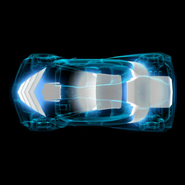Posted 02 July 2010
Fiat and R&D consortium to develop next generation solar technology to cover the surface of electric vehicles
Italian car manufacturing giant, Fiat has entered into a partnership with University College Dublin, Trinity College Dublin and Solar Print, a Dublin based SME, to develop solar panels that can be incorporated into automotives roof surface, as a means of generating alternative sources of energy for vehicles by converting light to power. The ‘SMARTOP’ project is a €3 million European Commission funded research project under the FP7 RTD programme.
Under the terms of the deal the consortium has begun working with the Centro Richerche Fiat (CRF) - the innovation and research arm of the car manufacturer - on the development of what is described as a ‘smart roof’. The new ‘smart roof’ will incorporate low cost photo voltaic (PV) – or solar - cells and lithium batteries that will in turn be used to power on board devices in cars.
The Solar Energy Engineering group and the Nanovation Lab headed by the SFI-SSE Renewables Professor in Engineering, K. Ravi Thampi, at the UCD School of Chemical and Bioprocess Engineering will be leading the UCD element of the SMARTOP project.
According to the consortium, the SMARTOP project has been set up to create a technology that will revolutionise the auto industry and the cars that we drive, by converting everyday light into a form of power.
This EU-funded project and its alliance with Fiat is a key milestone for the Science Foundation Ireland funded Strategic Research Cluster (SRC) on ‘The Advanced Biomimetic Materials for Solar Energy Conversion’ led by Professor Don MacElroy, Head of the UCD School of Chemical and Bioprocess Engineering.
“It shows that for Ireland solar energy is not only beneficial for the attainment of self-sufficient and sustainable energy practices, but also for the development of a new export oriented industrial base,” he said.
The team of more than 60 researchers in the SRC is adapting the emerging field of biomimetics to develop efficient low-cost solar energy conversion technologies. The SRC has close ties with the consortium partner SolarPrint, and with Professor Yurii Gun’ko at the School of Chemistry, TCD, through the UCD-TCD Innovation Alliance.
“The continued depletion of the world’s fossil fuels means that power hungry industries have become compelled to look at alternative sources of energy to power their products. The auto industry is a perfect example of this, with manufacturers looking at forms of energy other than petrol that can be used in cars. The SMARTOP project is truly a revolutionary step forward for the automotive sector,” said Dr Mazhar Bari, a physics graduate from University College Dublin, who founded SolarPrint with two colleagues.
“The smart sun roofs that will eventually be installed in cars offer a number of important advantages, in terms of energy that is both generated and saved, the lower cost of the component materials, and the overall comfort and benefits for the driver,” said Mr Lambertini, New Scouting Materials and Nanomaterials, Centro Richerche Fiat.
“Also, the energy generated and stored using this smart roofs concept is expected to reduce the CO2 emission with related fuel consumption by up to 15 per cent. For these reasons, at Fiat, we believe that this technology will be a major addition to our product lines in the future,” he said.
“There has been considerable discussion in recent months about the contribution of innovation-oriented industries to Ireland’s economy and this deal is a perfect example of this,” said Conor Lenihan TD, Minister for Science, Technology & Innovation.
“As a country and as a Government, we need to do all we can to continue to support Irish, globally focused firms, like SolarPrint, as they develop closer links with major international enterprises”.
In specific terms, the concept that is being addressed by SMARTOP - the research element of which is funded by the European Commission - is to develop a ‘smart’ sunroof that can integrate solar cells, energy storage systems and other devices to maximise energy efficiencies and to ensure driver comfort and fuel economy, both for fully electrical (FEV) and internal combustion engine (ICE) vehicles.
About Centro Richerche Fiat (CRF):
CRF was established in 1978 as the Fiat Group’s centre of expertise for innovation, research and development. Now an internationally recognised centre of excellence, CRF’s work constitutes a strategic lever for the Group’s businesses, enhancing performance through the development and transfer of innovative content, which makes the Group’s products both competitive and distinctive. In addition to its headquarters in Orbassano on the outskirts of Turin, CRF has three other centres located in Bari, Trento and Foggia, as well as a controlling interest in CRP, the plastics and optics research centre in Udine, which focuses on advanced research in optics and plastics for automotive lighting systems. CRF also works in close synergy with CSST, the centre for the study of transportation systems in Turin. With around 800 employees, CRF draws on a broad array of technical skills, in addition to a series of state-of-the-art laboratories for testing powertrain systems and electromagnetic compatibility, conducting NVH analyses and driving simulations, and developing materials and processes, optoelectronics and microtechnologies.
(Produced by UCD University Relations)

